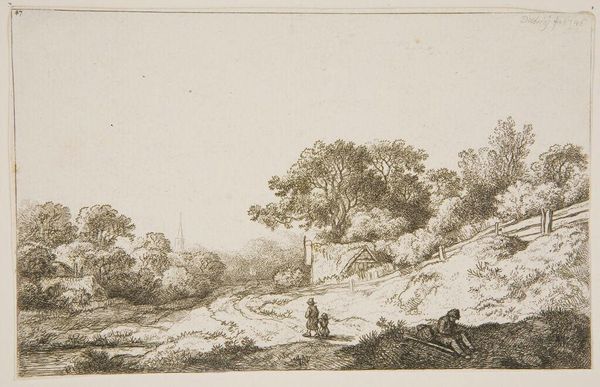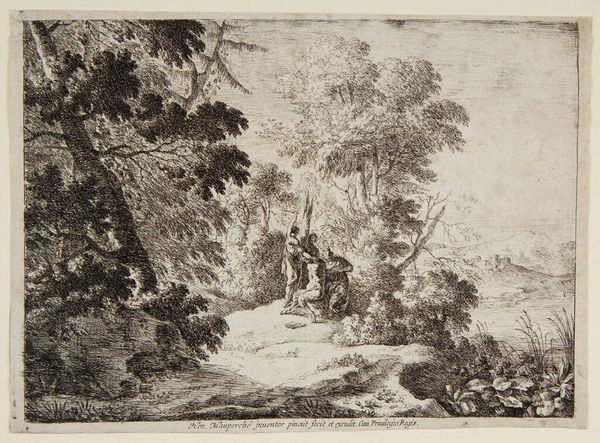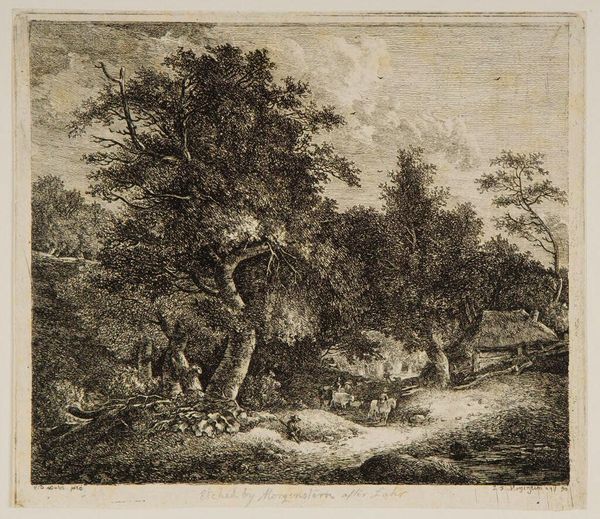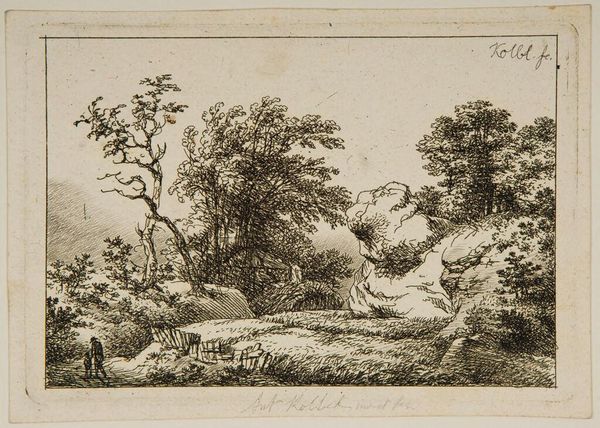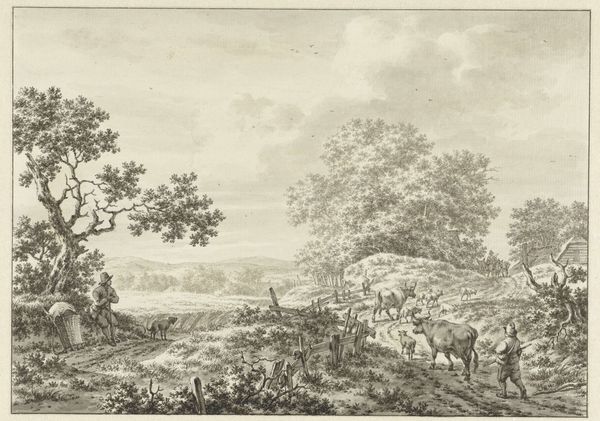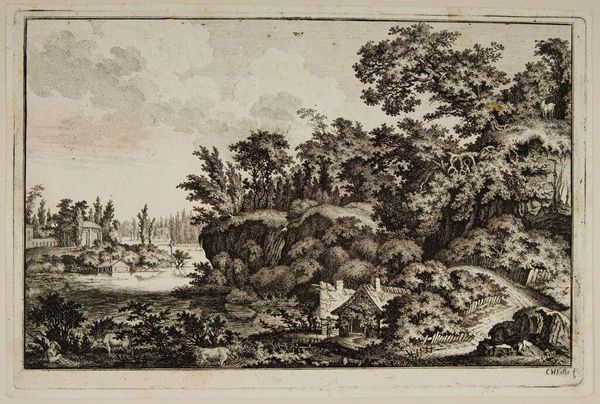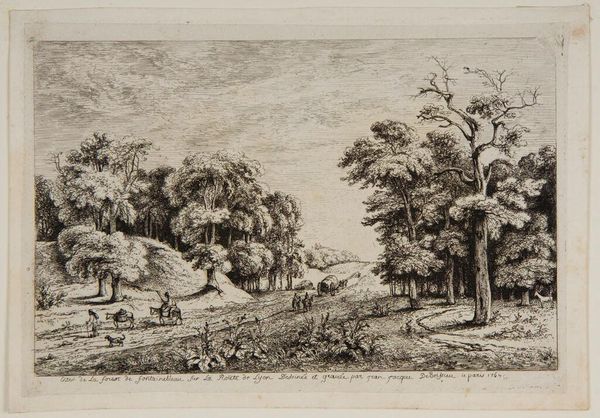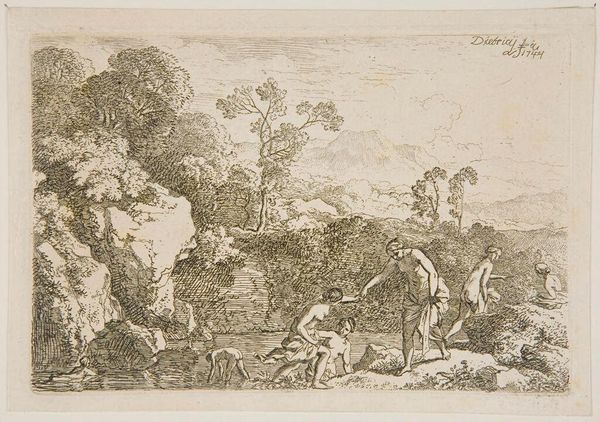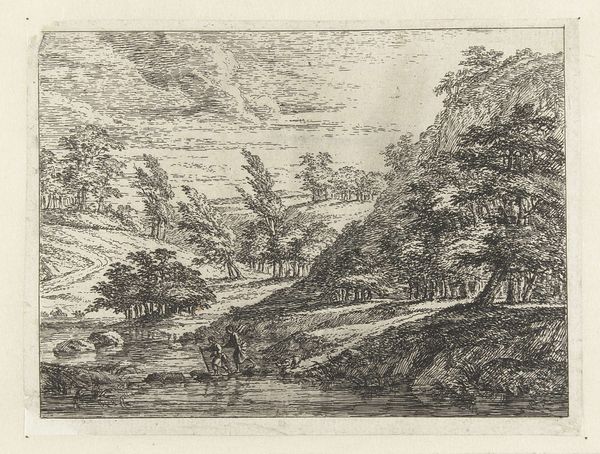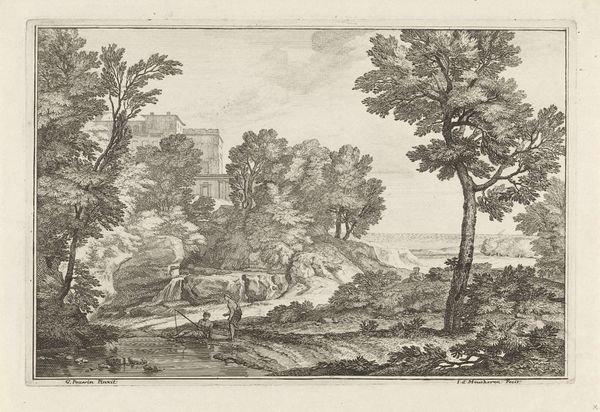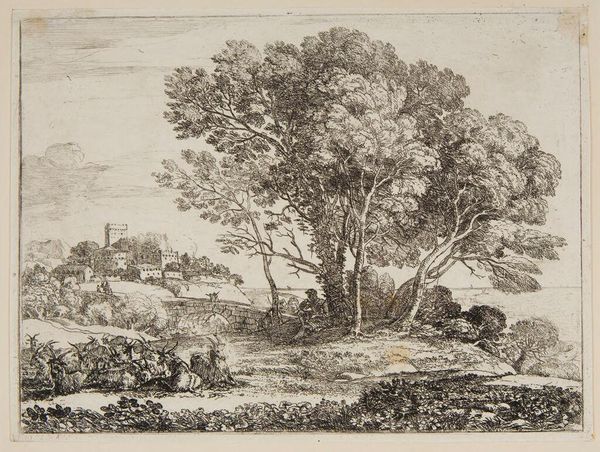
Copyright: CC0 1.0
Curator: This is "Road Behind the Village" by Christian Wilhelm Ernst Dietrich. Editor: It feels like a fleeting glimpse, a captured moment of quiet rural life rendered in delicate lines. Curator: Dietrich, who lived from 1712 to 1774, often explored the lives of ordinary people. Notice the figures walking along the road and consider the labor and the social hierarchies implied in that scene. Editor: The composition leads the eye from the foreground figures to the village scene, beautifully structured with buildings and landscape receding into a pale distance. Curator: The means of production itself, the etching process, is critical here. Each line, a deliberate mark, reflects the artist's labor and skill. The materiality of ink on paper speaks to the accessibility of printmaking, making art available for wider consumption. Editor: The tonal range, from the dark, expressive lines of the foreground to the muted background, creates a sense of depth and airiness, perfectly capturing the scene's atmosphere. Curator: Considering this work, I am reminded of the ways in which landscape art has historically depicted labor, social class, and the relationship between humans and nature. Editor: Yes, and by analyzing the aesthetic elements we gain a deeper understanding of the harmony Dietrich achieved in this small but powerful print.
Comments
No comments
Be the first to comment and join the conversation on the ultimate creative platform.
